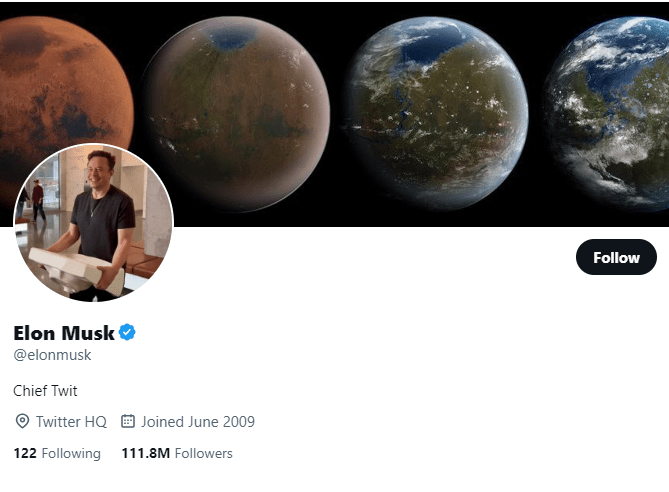If you work in marketing, or exist on the internet, you might have noticed that social media giant Twitter has been undergoing some changes. American billionaire Elon Musk first voiced his interest in buying Twitter in January of this year, and after multiple public spats, and a lengthy legal battle, he officially became ‘Chief Twit’ on October 28th.
Since then, many, many, many things have happened. They’ve also been happening at an uncomfortably fast rate (which doesn’t exactly bode well for the longevity of this blog). A quick rundown of some of the things that have happened in the last few weeks.
The now infamous email ultimatum about ‘Twitter 2.0’, which led to what has been described as a ‘mass exodus’ of Twitter employees. The email stated that employees had less than 48 hours to indefinitely accept incredibly long, hard working hours in what Mr Musk dubbed ‘hardcore mode’.
After responses to the above email, it was announced that the Twitter offices would be closed until Monday 21st November, and all access badges would be suspended with no details as to why.
There’s been lots of chatter on Twitter itself that European ‘Tweeps’ have been unceremoniously fired via email, or simply locked out of their computer systems. Unfortunately for Elon Musk, this is not even remotely in accordance with European labour laws.
Elon Musk has announced that Twitter is ‘done with layoffs’ and ready to start hiring again. When he took over the company it had around 7,500 employees. This number has dipped to around 2,500.
We wanted to take a quick look at why these events are causing problems for Twitter, and why, if you work in marketing, you should be keeping a very close and careful eye on the situation.
Layoffs, security concerns, and general chaos.
After Musk’s takeover of Twitter in late October, he immediately titled himself ‘Chief Twit’, and his first steps involved mass layoffs across the company. He also swiftly announced a new initiative called ‘Twitter Blue’ – a new take on the current verification system, which would allow users to purchase verification for as little as $8 a month. Inevitably, these actions soon resulted in a slew of issues arising for Twitter’s new head honcho.
Amongst those who resigned or were fired in the first few weeks were members of Twitter’s privacy and compliance team, which lead many to speculate about how vulnerable Twitter might be to attack. Concern deepened as Musk started firing people over simple disagreements with him, either publicly on the platform, or in private slack groups. (Somewhat ironic, given his public declarations about free speech and censorship on Twitter.) Although, perhaps to be expected from the man who has illegally fired workers at his Tesla factories for criticising working conditions, or attempting to unionise. Perhaps he has a private definition of free speech.
The widespread nature of the layoffs also caused some concern – firstly about how user experience of Twitter would be affected (and whether it would break down entirely). Secondly, if there would be enough staff left to cover bug fixes, and patches, considering the new features that Musk was wanting to push out as well. The nature of Twitter as a platform, and the speed at which information can spread on there is unique. This means that it has to be ready for record levels of traffic at all times. Will there be enough engineers left to cover the explosion of traffic for the World Cup?
Essentially, small bugs are likely to become big bugs, and there just may not be anyone to fix them. Just recently, one user went viral for posting the entirety of ‘Fast and Furious: Tokyo Drift’ in two minute clips over a 50 tweet thread, suggesting that Twitter’s copyright flagging system is no longer working (which leaves them vulnerable to yet more lawsuits).
Twitter Blue, verification, spread of information.
‘Twitter Blue’ has also been a cause for controversy ever since it was introduced (and then paused, and then introduced again, and then paused again). Creating a system where anyone can pay to be verified and appear at first glance to be legitimate has created widespread concern.
Although again, Elon Musk himself has often been criticised for spreading misinformation. It might not be his top priority currently, but it is something the rest of us should be concerned about, as Twitter is often used for organisation (the kind with protests, not post-its). Twitter allows incredible visibility to social movements, because anyone can follow along and get involved. The murkier the spread of information gets, the less reliable the information becomes, and currently, there simply isn’t another platform that can replace it
Twitter’s new verification has also caused predictable havoc for brands. After the rollout of Twitter Blue, hundreds of parody accounts started paying for verification to make $8 worth of jokes (something that Musk was very unhappy about, despite his previous, jubilant announcement that ‘comedy is now legal on Twitter’).
Perhaps the most infamous example of Twitter Blue causing damage is the verified (but fake) Eli Lilly account, which was impersonating an American insulin supplier, tweeting that all insulin would be free going forward. It took Twitter six hours to remove the post. During that time, Eli Lilly’s stock tanked 6%, losing them billions of dollars. They have since pulled all their ads from the site. Since then, other major advertisers have followed suit.
Where are we now?
The sheer magnitude of changes, mistakes, and problems that have arisen out of Elon Musk’s ownership of Twitter is almost impressive. Although we’re not usually a fan of conspiracy theories, it’s been posited that Elon Musk may be deliberately tanking the platform.
He’s spoken previously before about his plans for ‘X’ the ‘everything app’. If Twitter imploded, he might have a slightly more receptive audience for it. Whatever the reason, this most definitely isn’t over yet, despite #RIPTwitter trending over the weekend. Grit your teeth, grab some popcorn, and settle in.
If you’re looking for an experienced and creative marketing agency (for your Twitter content, or anything else), please feel free to get in touch with us here, and we can set up a meeting to discuss your needs.



